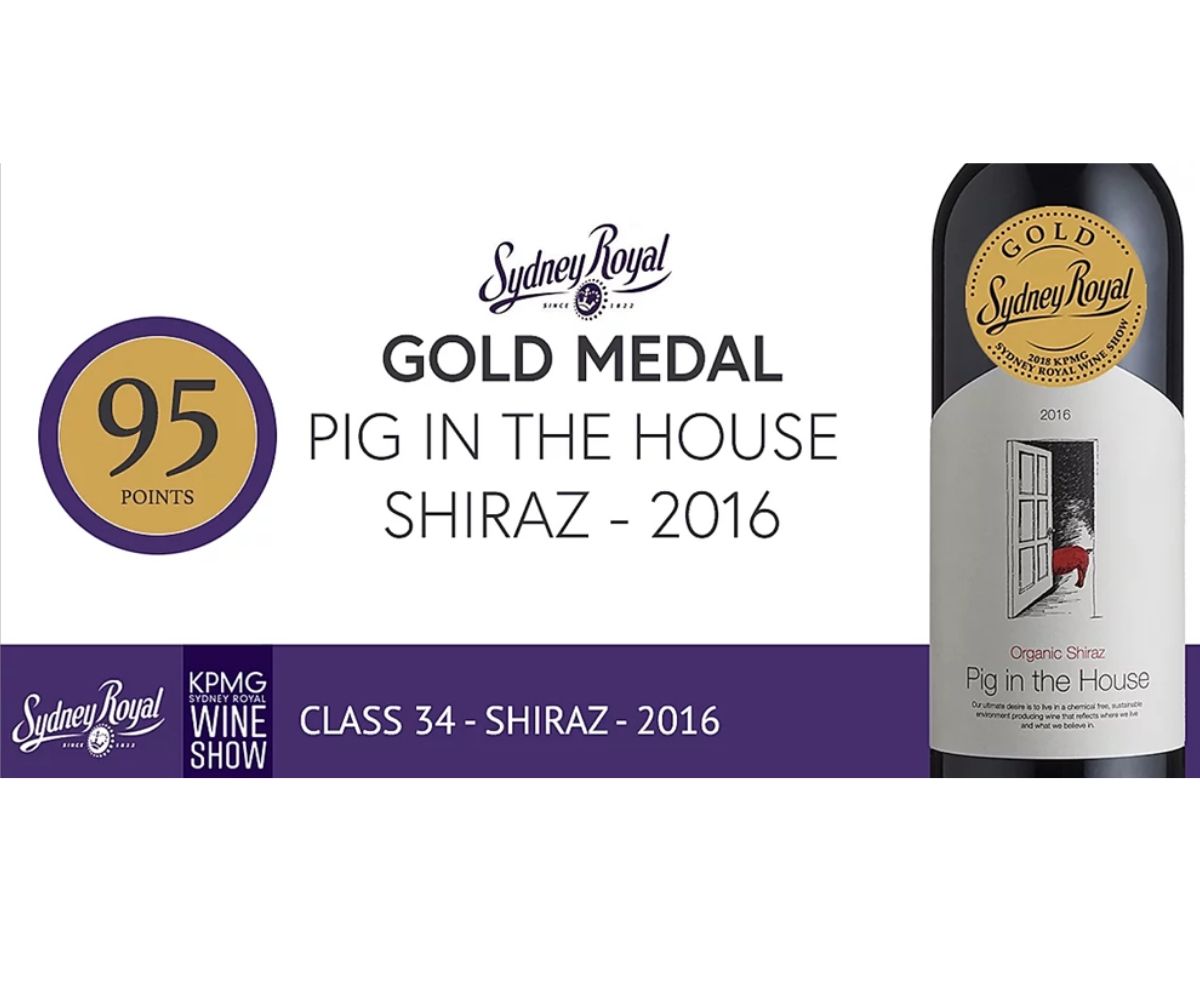Organic wines – Pig in the House

Right up there on the list of discredited old wives’ tales (is that a politically incorrect term these days?) is the one I occasionally hear from friends at dinner parties, that they prefer to drink organic wines because “they don’t give me a hangover”.
It’s a furphy of the ilk of the other famous dinner party quote that, “It’s the sulphites in red wine that give me a headache”. And I accept that everyone has an opinion on these unimportant matters and that research and data can be secured to support almost any proposition, but the weight of scientific opinion almost universally debunks these urban myths.
Sure, organic wines may be “healthier” wines than those not so certified, and sulphites, in general, might cause headaches to a small number of allergy sufferers, but if the sulphites in red wine give you a mild headache then, in theory, eating dried fruit like apricots should give you a migraine of gargantuan proportion. It’s not that well known, but there are more sulphites in a packet of dried fruit than a few bottles of Penfolds finest red!
And contrary to popular belief, it takes more than just using pesticide-free grapes to be classified as an organic wine. To earn that moniker, a certification from the Australian authority requires that the entire process from planting to cultivation and harvesting to vinification be undertaken in accordance with strict rules and requirements.
For producers, the process of becoming fully certified typically takes about three years and a whole lot of heartache along the way. Not only do primary producers have to write a substantial plan to evidence their organic farming protocols, but their property must be tested and audited in the process. The organic farmer will have to do away with pesticides and chemicals and utilise natural means to create “healthy” soils and to manage pest and disease. It means that organic vignerons will have to eschew the use of any synthetic compounds in fertilisers, and during winemaking, preservatives can’t be added.
It’s true that the reduced use of preservatives is a key distinguishing feature of organic wine, the allowable tolerance is much lower than conventional wines – rather than having around 300 parts per million (ppm), an organic wine may only have a maximum of 100 ppm for red wines and 150 ppm for whites, rosés and sparkling wine. But I remain to be convinced that the lower preservatives will prevent a hangover – and I can make that statement based on personal experience! Drink enough wine of any type and you’ll not feel particularly “chipper” the following day!
But credit where it’s due, some Australian winemakers are doing great work with organic farming, and at the end of the day, it isn’t meaning higher prices in the bottle shop. I recently tried the organic range from Pig in the House; an organic winegrower from the Canowindra in New South Wales.
Winemaker, Jason O’Dea, has won any number of awards for his wines, including Organic Wine of the Year at the 2017 Melbourne Royal Wine Show for his 2016 shiraz.
Working vineyards that were planted back in 1996, Jason has crafted a lovely Pig in the House Rose 2019 which is made predominantly of sangiovese but with a lashing of shiraz which he says was to “complement the flavour profile”. Personally, I wasn’t expecting such lively fruit given the very pale salmon colour in the glass. Cherries, red fruits and a luxurious mouthfeel are the hallmarks of this youthful pink wine. There are some gentle acids and a spiciness on the finish that will have you licking your lips and quickly reaching for the glass to take the next sip.
No longer does the term “organic” imply “forgive me for being alternate” or “B-grade, but better for you”. And if price matters, I reckon that the Pig in the House Rose 2019 is also pretty good value at less than $25 a bottle!